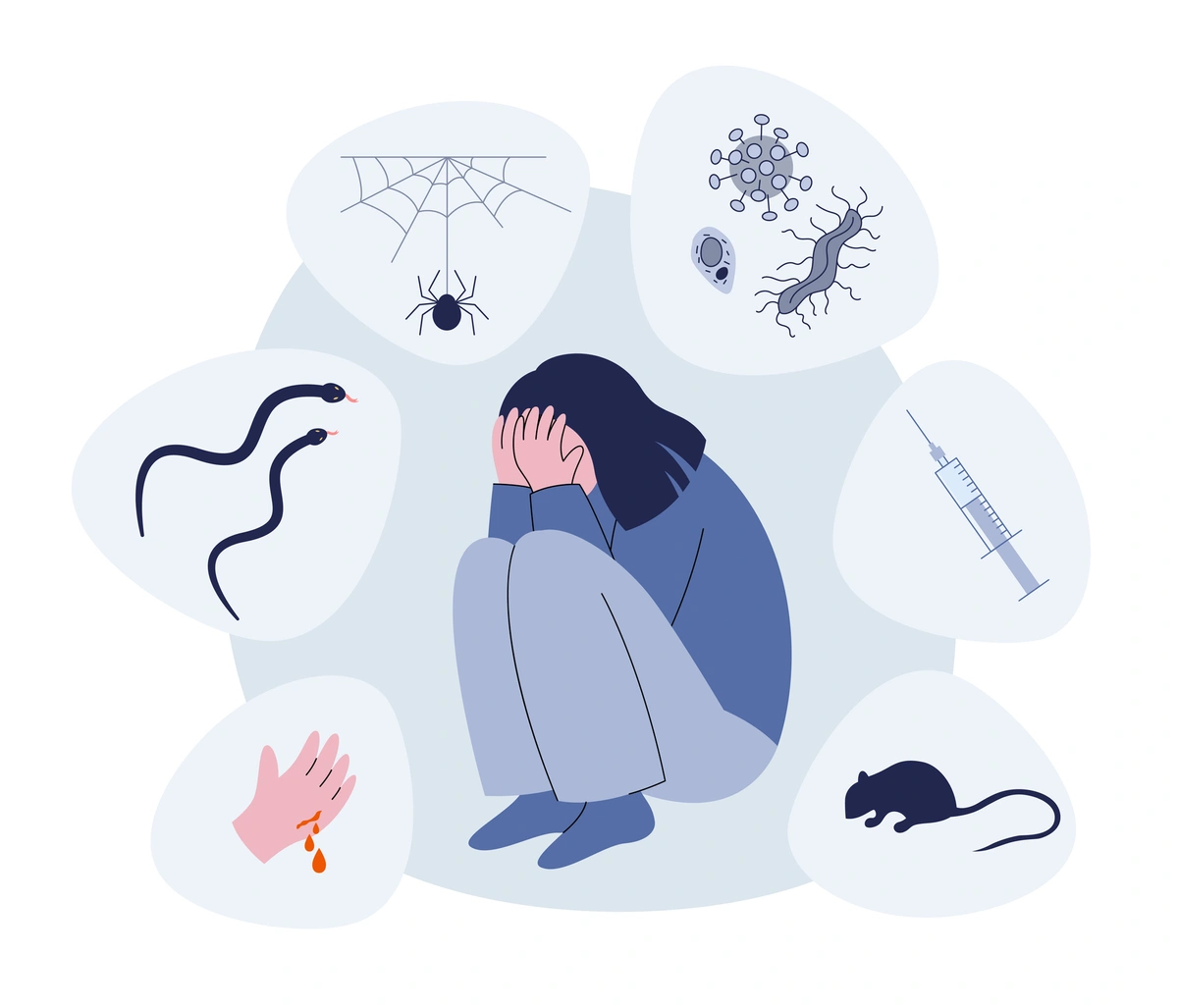Specific Phobia

Specific Phobia
According to the National Institute of Mental Health (NIMH), about 9 percent of adults in the United States suffered from specific phobias in the past year, although women are twice as likely to experience phobia (12 percent) than men (6 percent). Of individuals with specific phobia, nearly half (48 percent) have a mild impairment, while 30 percent are moderately impaired, and 22 percent have a serious impairment.
When experiencing more than one condition
Sometimes one condition is the result of another that was left untreated. For example, individuals with ADHD have a higher likelihood of experiencing symptoms of anxiety and depression, and people with anxiety are more likely to experience symptoms of other anxiety-related conditions.
As a result, in most cases a healthcare provider will focus on treating one diagnosis first, and if the other symptoms do not resolve, proceeding to treat the next diagnosis. As an example, when individuals struggle with ADHD in addition to anxiety or depression, treating the underlying ADHD tends to improve many other symptoms. An exception may be when a person’s depression or anxiety is so severe that they need immediate relief, and at that point, other interventions must be considered.
What it looks like
People with specific phobia have an extreme fear of encountering at least one particular object or situation, and the fear is above and beyond what one would expect. For example, many people fear spiders, although not everyone is afraid to the point of phobia, and if the fear is severe enough, a phobia can develop.
There are many different types of phobias. Some people are afraid of dogs or cats or of inanimate objects like elevators. Sometimes the fear is of an action that another person takes; for example, some people are phobic about having their blood drawn in a routine laboratory test to check for possible illness. Looking away while the blood enters the vial is not sufficient to prevent a phobic reaction. Instead, even thinking about getting a blood test raises their blood pressure and pulse, and sitting in the chair where blood is to be taken may cause a racing heart even before the technician does anything.
Visit here for more information on common phobias.
When thinking about - or encountering the feared item or situation - many people with a phobia experience particular physical symptoms, including the following:
- Dizziness or nausea (or both)
- Feeling short of breath
- A rapid heartbeat
- Suffering from chest tightness
These symptoms are a far more extreme reaction than any actual threat that the object of the phobia represents. For example, it is normal to fear or dislike snakes, and seems hard-wired into most peoples’ brains. But seeing a photograph of a cobra in a book would not induce the intense physical reactions just described in the non-phobic person. Even seeing an actual cobra in the zoo might seem a little scary to the average person, although the snake is in a cage and clearly cannot get out. However, the person who is phobic about snakes may experience high anxiety if they do not leave the area. Many people with phobias may avoid their feared objects and situations in order to avoid the negative thoughts and feelings that can come with a phobia, even if that means avoiding objects or situations that are important to them or would improve their quality of life.
Why phobias may develop
Phobias may develop when the feared object/situation has been paired in a person’s mind with a very negative event. For example, if a person is in a car crash during a thunderstorm, their mind may link thunderstorms with the experience of extreme danger. Sometimes people never learn why they have a particular phobia. Whether the person knows how their phobia developed or not, receiving treatment can address the symptoms associated with their phobia.
Outlook
While living with one or more phobias can present unique obstacles, treatment can dramatically improve one’s quality of life. The majority of people who are properly diagnosed and treated gain transformative results. In fact, people who have received treatment for their phobic feelings often say that it is one of the best decisions they’ve ever made.
In good company
Many celebrities reportedly have phobias:
- Jennifer Aniston (fear of flying)
- Sheryl Crow (fear of heights)
- Michael Jordan (fear of the ocean)
- Christine Rici (fear of sharks)
- Nicole Kidman (fear of butterflies)
- Keanu Reeves (fear of the dark)
- Matthew McConaughey (fear of revolving doors)
- Pamela Anderson (fear of mirrors)